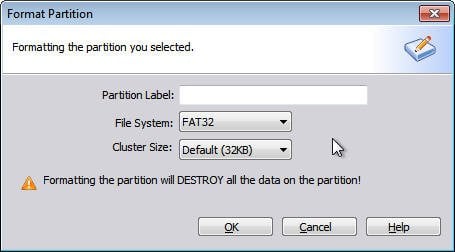Best File System For Usb
I bought a 128GB stick to back up my MacBook Air (Time Machine). This way I don't need to re-format my external HDD I use for backing up files from my Windows machine. Since I won't be using the stick with my Windows machine I thought I might format it with a 'better' file system than exFat. Would you recommend formatting it to HFS+?
H3R3T1KH3R3T1KSupports interoperability with future desktop operating systems. Therefore, if you have a large USB flash drive that you are going to be using for data transfer and storage, using exFAT instead of. NTFS is the most modern file system. Windows uses NTFS for its system drive and, by default, for most non-removable drives. FAT32 is an older file system that’s not as efficient as NTFS and doesn’t support as big a feature set, but does offer greater compatibility with other operating systems. However, your choices for a USB file system basically boil down to these: NTFS. NTFS, short for NT File System, is the default file system for Windows partitions. FAT32, or File Allocation Table 32, is the file system that typically comes preinstalled on. ExFAT, or extended File.

1 Answer
Best Flash Drive File System
From Apple KB : Backup disks you can use with Time Machine
Formatting a backup disk for use with Time Machine
The most common format for a Time Machine backup disk is Mac OS Extended (Journaled) format.
Time Machine also supports Mac OS Extended (Case-sensitive, Journaled), Mac OS Extended (Case-sensitive, Journaled, Encrypted), and Xsan formats.
If your disk uses the Master Boot Record (MBR) partition type, some partitions might not be available for use with Time Machine.
In short, use a Journaled HFS+ partition on a GUID[GPT] formatted disk for best results.
TetsujinTetsujinBest File System For Usb Linux
You must log in to answer this question.
Not the answer you're looking for? Browse other questions tagged backuptime-machineusbhfs+ .
This is due to FAT32 limitation. Files larger than 4GB can NOT be stored on a FAT32 volume. Formatting the flash drive as exFAT or NTFS will resolve this issue.
WARNING: Backup your data. Formatting will delete all the data in your device.
SOLUTION 1 - Format in exFAT
exFAT file system that allows a single file larger than 4GB to be stored on the device. This file system is also compatible with Mac.
Windows 7 and Mac OS 10.6.6 and higher are compatible with exFAT out of the box. Older operating systems may need a patch installed for exFAT compatibility.
NOTE: exFAT file system is NOT compatible with some host devices such as TV, game systems, older operating systems, car stereos etc.
Formatting a drive in exFAT
1. Double-click on My Computer.
2. Right-click on the flash drive or memory card, then select Format.
3. In the File System list, click exFAT.
4. Click Start.
5. Click OK to start formatting.
Click Here for Instructions to format with Mac
SOLUTION 2 - Format in NTFS
WARNING:
- Formatting the device as NTFS will make it unwriteable on a Mac computer. Most Mac computers can read NTFS, but not write.
- NTFS is a journaled file system, this creates more read/write activities. Therefore, it MAY decrease life expectancy of your device.
- Once the device is formatted as NTFS, you MUST use 'Safely Remove Hardware' to remove your device.
STEP 1 - Optimize the flash drive for performance
1. Plug in the device to the PC.
2. Open The Computer Management Console
a) Windows 8
b) Windows XP, Windows Vista, Windows 7
3. On the Left side selectDevice Manager
4.On the right side expandDisk Drives
5. Right-click on the flash drive, then select Properties.
6. Click the Policy tab.
7. Select Optimize for performance, then click OK.
STEP 2 - Format the flash drive
1. Double-click My Computer.
2. Right-click on the flash drive, then select Format.
3. In the File system list, click NTFS.
4. Click Start.
5. Click OK to start formatting.